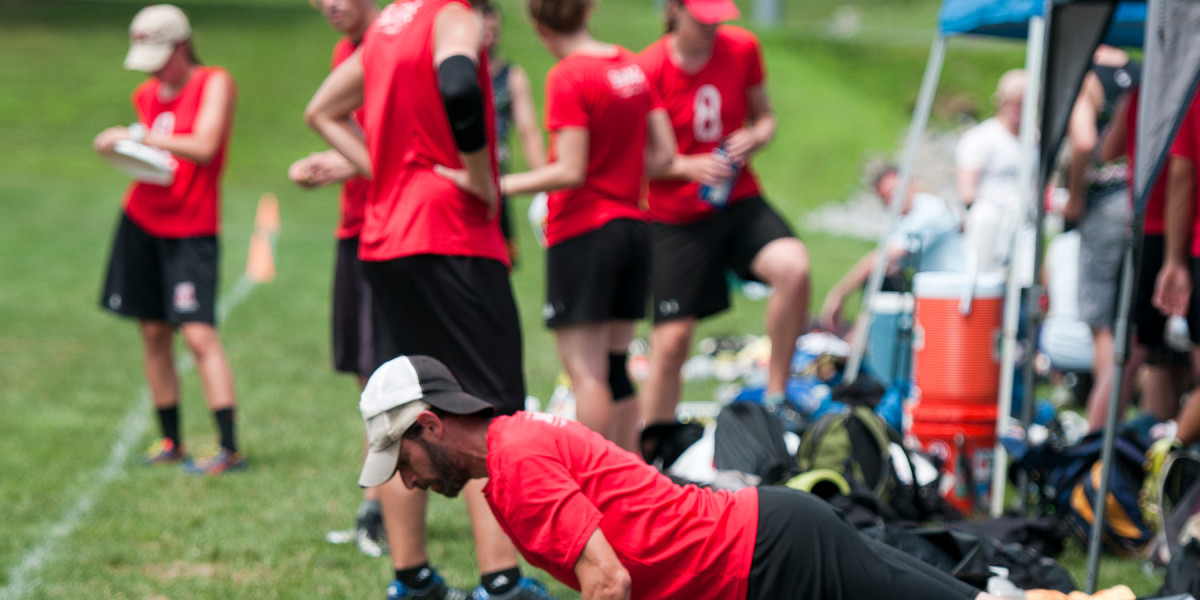 Jolie J. Lang - UltiPhotos.com
Jolie J. Lang - UltiPhotos.com
Ren Caldwell, Tim Morrill, and myself were all presenters at last week’s URCA conference.
Jackson Dolan noted during Tim’s talk, “Melissa acknowledged that there is always going to be some discrepancies when strength and fitness trainers give advice. These discrepancies happen almost exclusively in the little details though, and there is wide-scale agreement on the general ideas and execution.”
In this article, I’d like to expand on that idea and offer a few basic principles that we all definitely agree on even though our methods and specific recommendations may vary. In fact, these things would be agreed upon by the grand majority of all certified strength and conditioning coaches. If you feel information overwhelm or are worried that there’s a lot of conflicting information out there about your training, start here:
1. The Importance of Tissue Quality Work
Everyone should get in the habit of doing some self myofascial release (SMR) work. This includes things like foam rolling, working with a lacrosse ball, or using other objects to massage muscle tissue.
A few main points
- Tissue quality work is more important the older you get.
- Tissue quality work is more important the harder you train.
- How much and what areas need attention varies a LOT depending on the individual.
The points above apply equally well to other individualized maintenance activities like stretching and mobility work. Only you can really figure out how much and what works best for you to make you feel good. Experiment and learn!
A small experiment:
Find a lacrosse, field hockey, or other ball. Massage the bottom of your feet every morning for two minutes over the course of a week. Do you feel a difference? Likely your massage session at the end of the week will feel different than at the beginning of the week. You might feel fewer pain points in the bottom of your foot. It may feel more uniform. It doesn’t take a whole lot, if done consistently, to bring about small changes for the better in your muscle tissue quality.
2. Single Leg Work is Vital to the Health and Performance of Field Athletes
Changes of direction occur on one leg. In fact, pretty much everything you do on the ultimate field occurs on one leg at a time.
Single leg work is important because it not only builds strength in the prime movers like quads, glutes, and hamstrings, but also builds strength and coordination in the stabilizing muscles.
I’ll never forget watching the huge football players at Power Train Sports being introduced to yoga for the first time. They were amazing! It was interesting to note that they were extraordinarily well balanced in their tree poses despite never having done them before. Why? They had been doing a ton of single leg strength work. It always makes me laugh to hear people talk about doing yoga to get strong. It should be the other way around. Get strong so you can be better at yoga.
A small experiment:
Try replacing your squats and deadlifts with these two exercises for a cycle. See how you feel, move and perform afterwards!
An excellent single leg strength exercises is the Front Foot Elevated Split Squat (FFESS)
For a hip-dominant single leg exercise that really challenges balance and coordination, you’ll want to try the Single Leg Straight Legged Deadlift (SLSLDL)
Your first try on the SLSLDL will be a little rough. You should start with about 5 pounds and work on your balance first. So you may wonder, will I ever really build strength with this exercise? The answer is yes, but only after you develop sufficient body control. After a few months, it is totally possible to load these up with heavy dumbbells or a barbell and do more weight.
3. The Value of an Offseason
If you are truly serious about making noticeable gains in your athleticism, you MUST do work in the offseason. The ultimate season is long and grueling. For the best chance of making it thought the season injury free and feeling good, you need to come into the season well prepared with more strength than you need and good movement patterns. Piling most of your training into a short 4-6 week period before tryouts may get you in shape, but it will not allow you to lay the foundation for a strong, fast body that lasts and can recover properly from the demands during the season.
There is a reason the latest opening of The Ultimate Athlete Project is in January. Starting later than that will not get the results I want for you.
Along with an off season, you should have a plan. If you are doing the same workouts month after month, you are going to plateau. If you are doing whatever you randomly feel like doing, you will be leaving a lot of potential on the table. Taking time to find or create a plan for the off season, even if it’s only eight weeks devoted to training, will pay off very large dividends in the season to follow.
A small experiment
Research! Ask a few players you know… How much time to they spend training in January-March? What kind of training do they do? How do they feel by the end of the season in September or October?
Ask Questions!
There are other things that could be added to this list as well. I hope these three things give you something to start with and help you feel more confident and comfortable in your training decisions. Any questions you’d like to ask Tim, Ren, and me? Leave them in the comments!











Comments Policy: At Skyd, we value all legitimate contributions to the discussion of ultimate. However, please ensure your input is respectful. Hateful, slanderous, or disrespectful comments will be deleted. For grammatical, factual, and typographic errors, instead of leaving a comment, please e-mail our editors directly at editors [at] skydmagazine.com.